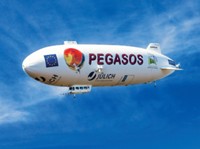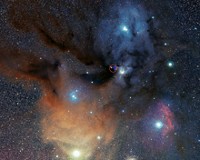Advertisement
Grab your lab coat. Let's get started
Welcome!
Welcome!
Create an account below to get 6 C&EN articles per month, receive newsletters and more - all free.
It seems this is your first time logging in online. Please enter the following information to continue.
As an ACS member you automatically get access to this site. All we need is few more details to create your reading experience.
Not you? Sign in with a different account.
Not you? Sign in with a different account.
ERROR 1
ERROR 1
ERROR 2
ERROR 2
ERROR 2
ERROR 2
ERROR 2
Password and Confirm password must match.
If you have an ACS member number, please enter it here so we can link this account to your membership. (optional)
ERROR 2
ACS values your privacy. By submitting your information, you are gaining access to C&EN and subscribing to our weekly newsletter. We use the information you provide to make your reading experience better, and we will never sell your data to third party members.
Environment
Radical Source
Hydroxyl radicals born from excited nitrogen dioxide and water
by Rachel Petkewich
March 24, 2008
| A version of this story appeared in
Volume 86, Issue 12

RESEARCHERS HAVE FOUND that nitrogen dioxide molecules, when excited by visible light, react with water vapor in the atmosphere to form substantial amounts of hydroxyl radicals (Science 2008, 319, 1657). They say this reaction, which has been long considered too insignificant to include in atmospheric models, could account for up to 50% of tropospheric hydroxyl radicals under certain conditions.
The researchers add that the reaction probably contributes to urban ozone formation and smog. "The reaction of hydroxyl radicals with hydrocarbons, after going through a series of reaction steps, ultimately leads to urban smog formation in the presence of NO and NO2," says professor of chemistry and biochemistry Amitabha Sinha of the University of California, San Diego, who led the study. "Understanding the underlying factors that control smog production will ultimately allow us to set guidelines on how to control it."
The primary source of tropospheric hydroxyl radicals is the reaction of water with excited oxygen atoms dissociated from ozone by UV light. But the new study indicates that hydroxyl formation from excited NO2 reacting with water, although a thousand times slower, is significant because it relies on visible light, which is more abundant in the troposphere.
Scientists in Germany first suggested that atmospheric hydroxyl radicals could be produced from excited NO2 and water in 1997. Their measurements, however, did not detect formation of hydroxyl radicals.
With a sensitive laser technique, Sinha and his colleagues have now directly observed the process. They suggest the rate is 10 times faster than the German group had estimated.
Ronald C. Cohen, an atmospheric chemist at UC Berkeley, says this 10-fold increase "takes this source from a minor player to near domination" of hydroxyl radical formation in the troposphere.
In a Science commentary, Caltech chemist Paul Wennberg and UC Irvine chemical engineer Donald Dabdub raise concerns that the rate constant reported by Sinha's group may be too large. They say further investigation is needed, given the high sensitivity of atmospheric models to the reaction of excited NO2 with water and the potential importance of the chemistry.





Join the conversation
Contact the reporter
Submit a Letter to the Editor for publication
Engage with us on Twitter